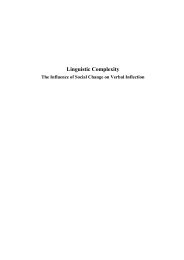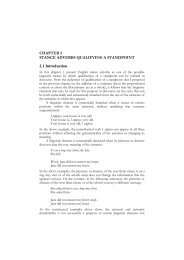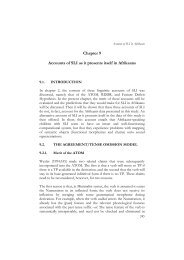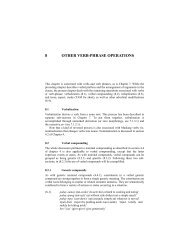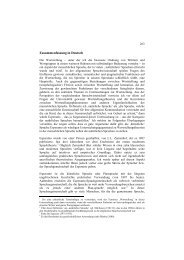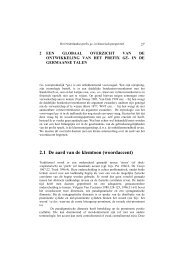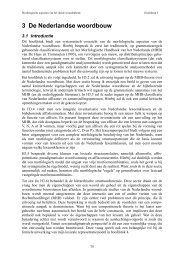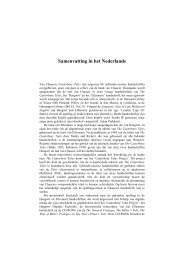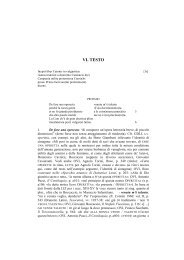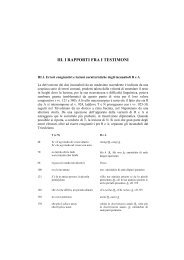Linking elements in compounds - LOT publications
Linking elements in compounds - LOT publications
Linking elements in compounds - LOT publications
Create successful ePaper yourself
Turn your PDF publications into a flip-book with our unique Google optimized e-Paper software.
SIMILARITY OF PLURAL ENDINGS AND LINKING ELEMENTS<br />
2003). In Table 1, an overview of the geographic regions <strong>in</strong> the Netherlands<br />
with different pronunciations of the plural -en and the specific regions selected<br />
for consideration <strong>in</strong> the present study can be found.<br />
Table 1<br />
Overview of the Realization of Plural -e(n) accord<strong>in</strong>g to Geographic Region of the<br />
Netherlands with Specific Region <strong>in</strong>dicated <strong>in</strong> Parentheses<br />
Region Plural -e(n)<br />
North (Friesland) often realized as [(ǝ)n]<br />
East (Achterhoek) often realized as [(ǝ)n]<br />
Middle (Veluwe) variable realization, [(ǝ)n] or [ǝ]<br />
South (Limburg) often realized as [ǝ]<br />
West (South-Holland) often realized as [ǝ]<br />
Pronunciation of the plural -n is generally preserved <strong>in</strong> the Northern and<br />
Eastern regions of the Netherlands. In the Southern and Western regions, the<br />
plural -n is often deleted (Goeman, 2001; Goossens, 1987; de Schutter, 2001; de<br />
Wulf & Taeldeman, 2001). The Middle region of the Netherlands (e.g., the<br />
Veluwe, the western part of the prov<strong>in</strong>ce Gelderland) is considered as a<br />
transitional area where speakers produce both plural [(ǝ)n] and [ǝ] (Goeman,<br />
2001).<br />
In the present study, the pronunciations of the plural suffix -en and the<br />
l<strong>in</strong>k<strong>in</strong>g element en <strong>in</strong> compound words were compared. 2 These two<br />
morphological categories can be homographic <strong>in</strong> Dutch as <strong>in</strong> boeken (boek+en,<br />
‗books‘) and boekenkast (boek+en+kast, ‗bookcase‘) or tanden (tand+en, ‗tooth‘)<br />
2 Some l<strong>in</strong>guists use the notion ―l<strong>in</strong>k<strong>in</strong>g element‖ exclusively for those <strong>elements</strong> that are<br />
mean<strong>in</strong>gless <strong>in</strong> their view (Bauer, 2003, p. 30; Booij, 2007, p. 316; see further). Here, we<br />
make no dist<strong>in</strong>ction between ―mean<strong>in</strong>gful‖ (plural morphemes) and ―mean<strong>in</strong>gless‖<br />
<strong>elements</strong> (l<strong>in</strong>k<strong>in</strong>g <strong>elements</strong>) and use the term for all those <strong>in</strong>terfixes that occur between<br />
the modifier and the head of the compound.<br />
29



